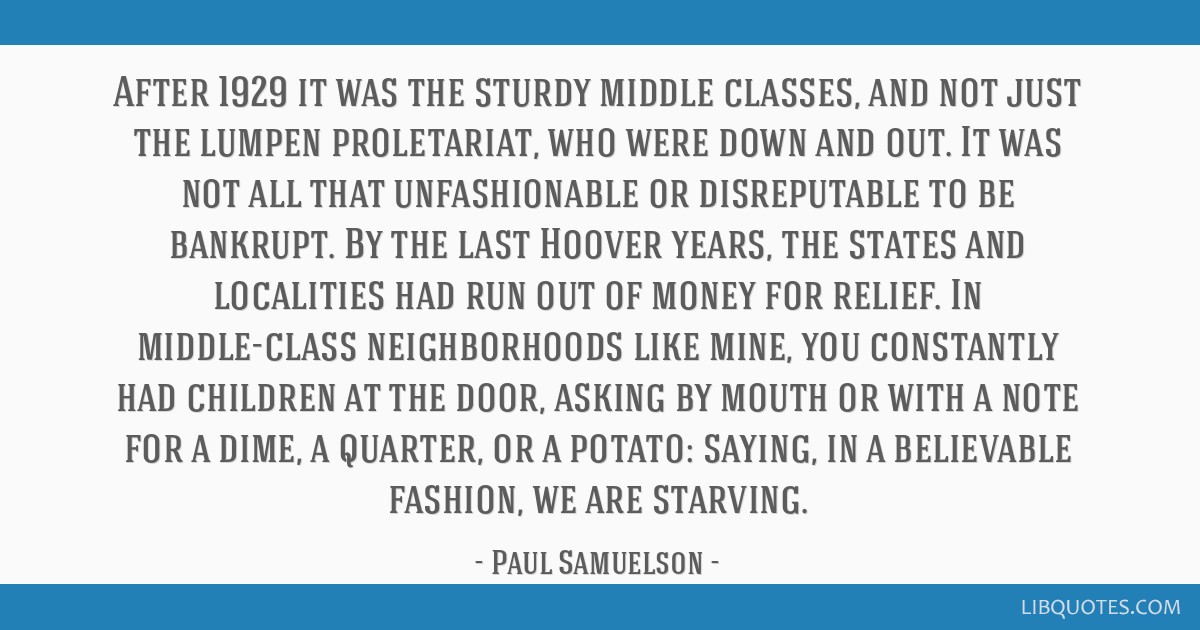After 1929 it was the sturdy middle classes, and not just the lumpen proletariat, who were down and out. It was not all that unfashionable or disreputable to be bankrupt. By the last Hoover years, the states and localities had run out of money for relief. In middle-class neighborhoods like mine, you constantly had children at the door, asking by mouth or with a note for a dime, a quarter, or a potato: saying, in a believable fashion, we are starving.
Samuelson (1985; p, 6) as cited in: Klein, Daniel B., and Ryan Daza. "Paul A. Samuelson (Ideological Profiles of the Economics Laureates)." Econ Journal Watch 10.3 (2013): 561-569.























